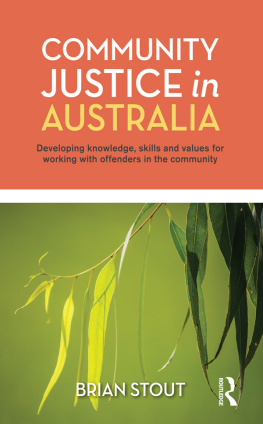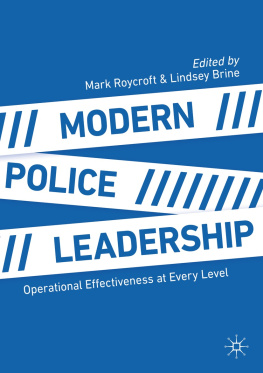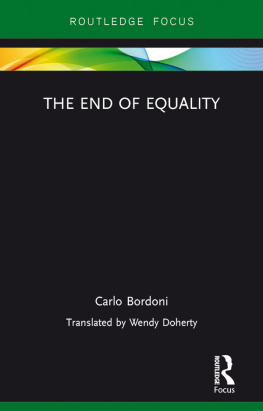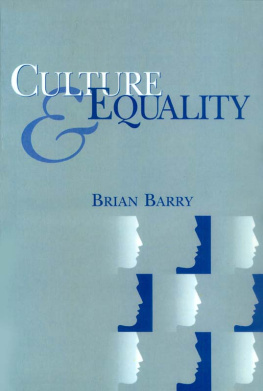First published in 2010 by Learning Matters Ltd
All rights reserved. No part of this publication my be reproduced, stored in a retrieval system or transmitted in any form by any means, electronic, mechanical, photocopying, recording, or otherwise, without prior permission in writing from Learning Matters Ltd.
2010 Copyright Brian Stout
British Library Cataloguing in Publication Data
A CIP record for this book is available from the British Library.
ISBN: 978 1 84445 353 5
This book is also available in the following ebook formats:
Adobe ebook | ISBN: 978 1 84445 665 9 |
EPUB ebook | ISBN: 978 1 84445 664 2 |
Kindle | ISBN: 978 1 84445 973 5 |
The right of Brian Stout to be identified as the Author of this work has been asserted by him in accordance with the Copyright, Design and Patents Act 1988.
Cover design by Toucan Design
Project Management by Diana Chambers
Typeset by Kelly Winter
Printed and bound in Great Britain by TJ International Ltd, Padstow, Cornwall
Learning Matters Ltd
33 Southernhay East
Exeter EX1 1NX
Tel: 01392 215560
info@learningmatters.co.uk
www.learningmatters.co.uk
All weblinks and web addresses in the book have been carefully checked prior to publication, but for up-to-date information please visit the Learning Matters website, www.learningmatters.co.uk.
Getting started
BOOK OBJECTIVES |
By the end of this book you should be able to: - outline the key national policy and legislation that relate to all six strands of diversity and that are relevant to policing;
- describe at an introductory level some of the historical, criminological and sociological context relating to policing and all six strands of diversity;
- demonstrate knowledge of past and present police practice in relation to all six strands of diversity and show an ability to implement best practice in the future;
- reflect on the issues in dealing with particular sorts of offending, such as hate crime.
|
LINKS TO STANDARDS
This introductory chapter provides opportunities for links with the following Skills for Justice, National Occupational Standards (NOS) for Policing and Law Enforcement 2008.
AE1.1 | Maintain and develop your own knowledge, skills and competence. |
CA1 | Use law enforcement actions in a fair and justified way. |
HA1 | Manage your own resources. |
HA2 | Manage your own resources and professional development. |
Links to current NOS will be provided at the start of each chapter; however, it should be noted that these are subject to review and it is recommended that you visit the Skills for Justice website to check the currency of all the NOS provided: www.skillsforjustice-nosfinder.com.
Introduction
This book will cover the issues of equality and diversity in the police. Working with diversity goes to the heart of the function of a police officer, and the responsibility to serve the whole community. This book, it is hoped, will make a contribution to achieving the aim of diversity training as identified by Bryant et al.:
The aim of diversity training within the police service is usually to help you to meet the expectations of the public you serve and of your organisation regarding your attitude and behaviour towards other people and members of diverse communities.
(2006, p63)
As such, diversity training for police officers needs to go beyond simply training officers to do what the law requires. It should also lead to them internalising the messages of the training and respecting diversity because of their acceptance that it is the right thing to do.
The introduction will set out some general arguments as to why equality and diversity are important for society and for the police, and will cover some of the history of and background to the ways in which the police work with diversity. It will focus in particular on the changes in society and changes in policing since the Lawrence Inquiry and the coming into office of the Labour government in 1997.
The book is structured to allow consideration of the six strands of diversity, with one chapter devoted to each. The chapter on race, , looks at both the response of the police to age discrimination legislation and the approach of the police and the criminal justice system as a whole to crime committed by young people.
All chapters follow a similar format, and initially set the objectives of the chapter and identify the legislative and policy context. This is followed by some discussion of criminological and sociological approaches to the diversity strand in question. The reason for doing this is twofold. First, it is helpful to put the police response to aspects of diversity in theoretical and societal context. There is much in the history of the polices response to diversity that now appears to be very poor practice. It is helpful to contextualise this by considering how broader society also struggled with some of these issues. Second, many students of policing study the subject alongside criminology or on programmes that have pathways into and out of criminology programmes. It is useful therefore to draw these links. After the discussion of criminology, the chapters go on to discuss past and present police practice, followed by some examples of best current practice and ideas for the future. The police, nationally and locally, are setting very high standards for themselves in working with diversity in the future and it is useful to set these out.
This book is an introductory text, and throughout the book the primary sources from where material is taken is identified and each chapter signposts the reader to further sources, both books and websites. There are also practical and reflective tasks in each chapter. These can be undertaken individually, but most are best carried out as tasks for learning sets or seminar groups, so that you can work together with other students to learn from each other, as well as from the written material.
The context for discussing equality, diversity and policing is an ever-changing one. This book was written in late 2009 and, during the time of writing, the Equality Bill progressed towards enactment and the death of Fiona Pilkington and Francecca Hardwick led the previously neglected issue of disability hate crime to receive national attention. Also, the failed prosecution of bed and breakfast owners, Ben and Sharon Vogelenzang, provoked further debate about the law on inciting religious hatred. In 2010, a general election and possible change of government could have significant implications for policing, but it is also likely that some unforeseen event will highlight a particular diversity issue and the police response to it will receive publicity and policy attention. It is impossible to anticipate exactly what might happen, but it is hoped that the material in this book will equip police students not just for the current environment but for the changing context to come.










